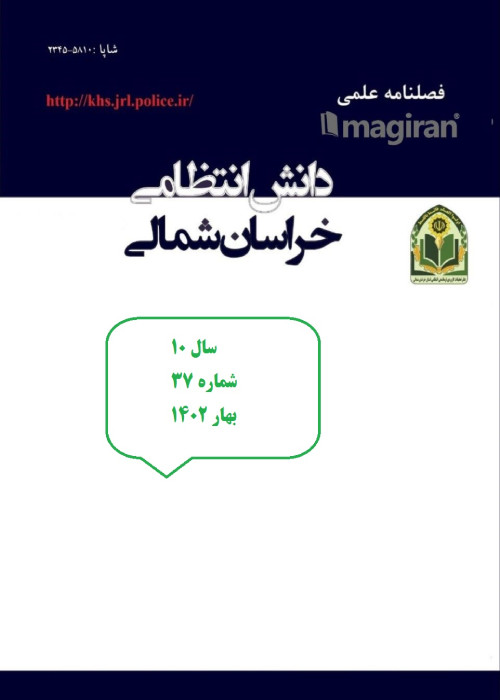Evaluation of seismic hazards on worn and unstable tissues of Bojnourd city
Author(s):
Article Type:
Research/Original Article (بدون رتبه معتبر)
Abstract:
Earthquakes are one of the hazards that always threaten the environment of cities. One of the best ways to mitigate in natural hazards is prevention. The city of Bojnourd, the capital in Northern Khorasan province in northeastern Iran, with a population of 211,000 people, is located between the two sedimentary-structural areas in Kopeh Dagh, Hezar Masjed and Aladagh-Binalood, which is considered as one of the most dangerous areas in terms of seismicity. The present study is applied in terms of purpose and descriptive-analytical in terms of method. The information used was collected through documentary and library methods and then, according to experts, the indicators affecting the sustainability of the city were identified. Hierarchical analysis (AHP) method has been used to measure the weight of the criteria. In this study, identification of fault lines and their distances from the urban area, long-term seismological studies of seismic centers of the region, seismic hazard zoning map, combination of this map with worn and unofficial tissue map and final map output through fuzzy logic in ARC GIS to assess seismic risk. According to the final map, the seismic hazard assessment in Bojnourd city it seems that the central core of the city and part of the south of the city exposing with quite high risk which is about 40%. Marginal area of the city is exposing with high risk which is about 35%. Rural areas surrounding the city are exposing with medium and low level of risk which is 5.11%. Therefore, it can be concluded that 75% of the land uses and populations in Bojnourd city are exposing with high and quite high level of earthquake risks.
Keywords:
earthquake , Earthquake Risks , Worn Tissue , AHP , Bojnourd
Language:
Persian
Published:
Journal of North Khorasan Disciplinary Knowledge, Volume:7 Issue: 25, 2020
Pages:
75 to 110
magiran.com/p2643571
دانلود و مطالعه متن این مقاله با یکی از روشهای زیر امکان پذیر است:
اشتراک شخصی
با عضویت و پرداخت آنلاین حق اشتراک یکساله به مبلغ 1,390,000ريال میتوانید 70 عنوان مطلب دانلود کنید!
اشتراک سازمانی
به کتابخانه دانشگاه یا محل کار خود پیشنهاد کنید تا اشتراک سازمانی این پایگاه را برای دسترسی نامحدود همه کاربران به متن مطالب تهیه نمایند!
توجه!
- حق عضویت دریافتی صرف حمایت از نشریات عضو و نگهداری، تکمیل و توسعه مگیران میشود.
- پرداخت حق اشتراک و دانلود مقالات اجازه بازنشر آن در سایر رسانههای چاپی و دیجیتال را به کاربر نمیدهد.
In order to view content subscription is required
Personal subscription
Subscribe magiran.com for 70 € euros via PayPal and download 70 articles during a year.
Organization subscription
Please contact us to subscribe your university or library for unlimited access!


